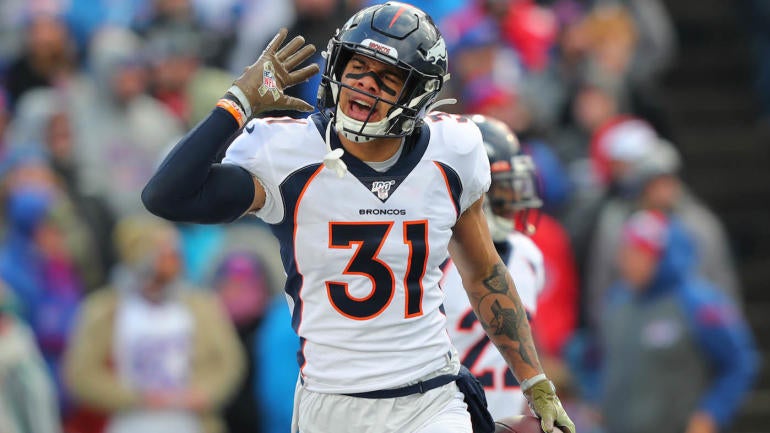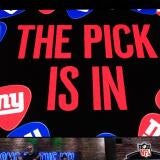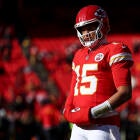Why is former Broncos star Justin Simmons still unsigned? Plus, five best fits for 2024 free agent
Examining the safety's unexpectedly quiet market

Jamal Adams recently resurfaced as the newest addition to the Tennessee Titans, marking the next chapter for a player once considered one of the NFL's best safeties. His deal was arguably just as notable for reigniting questions about a fellow free agent: Why, exactly, is Justin Simmons still available?
Released by the Denver Broncos in a cost-cutting move this March, Simmons doesn't just have the name recognition of Jamal Adams. He's also got the resume to back it up. Two years removed from leading the NFL in interceptions, fresh off another Pro Bowl nod, he's easily one of the most accomplished veterans still unsigned ahead of the 2024 season. So why is he still seeking a new team?
It's not for a lack of interest in playing. Simmons has been open about wanting to "know where I'm going," arguing he can be "the missing piece" for a contender. Which means the only logical explanation for his unexpectedly slow market is a glaring discrepancy between his perceived and actual value to other teams. In simpler terms: As is often the case in big-name free-agent negotiations, money is the likely culprit.
Consider the Brandon Aiyuk saga in San Francisco, where the emergent wide receiver has entertained trade rumors while seeking a lucrative extension from the 49ers. All indications are the 49ers want to keep Aiyuk long-term. All indications are Aiyuk wants to stay put long-term. Odds are they'll even stay together, at least for 2024. Yet there's been no known movement on the contract front because each side is entrenched in its demands: Aiyuk believes himself worthy of top-tier receiver money, and the 49ers have a designated price point in light of lofty commitments to peers like Christian McCaffrey and Deebo Samuel.
With Simmons, it's not hard to connect similar dots. Three years ago, the ex-Broncos standout signed a four-year, $61 million extension averaging $15.25 million per year. Since inking that deal, meanwhile, Simmons has only 1.) earned three straight All-Pro nods, 2.) led the NFL in picks, averaging 4.6 interceptions per year, and 3.) captained two top-10 defenses. He's still offering roughly top-five safety production, so it stands to reason he's been seeking something equivalent on the financial front.
Here's the flip side: Simmons turns 31 in November, has missed multiple games due to injury in two straight seasons, and hit the market alongside a deep crop of younger, cheaper counterparts whose ball-hawking production has sometimes rivaled that of his own. C.J. Gardner-Johnson (age 26), Jordan Fuller (26) and Geno Stone (25) have all enjoyed Pro Bowl-caliber runs in recent years, and all three settled for deals averaging no more than $9 million per year this spring. The two exceptions were Antoine Winfield Jr. and Xavier McKinney, who are 25 and 26, respectively, and were coming off career years.
Not a single safety over the age of 30, in fact, currently averages even $10 million per year. The highest earner in that category is longtime Minnesota Vikings leader Harrison Smith, who averages $9 million per year on a renegotiated deal just two seasons after logging a career-high five picks. Simmons is younger than Smith, of course, and he may be superior. NFL teams' spending speaks louder than words at this position, however: Defenses value fresh legs at the back end of the secondary.
How soon Simmons and an interested party bridge that gap remains to be seen. Training camp or preseason injuries would surely escalate the possibility of a partnership. In the meantime, here are five teams that profile as the best fits for the former Broncos safety:
5. Indianapolis Colts
Julian Blackmon is fresh off a career year at safety, earning a pay raise this offseason. He's got little experience by his side, however, with third-year reserve Nick Cross penciled in at the other starting slot. With lots of youth also at cornerback, Indy is ripe for a more seasoned addition and has close to $26 million in projected salary cap space available.
4. Detroit Lions
They got aggressive to upgrade cornerback, spending early draft picks on both Terrion Arnold and Ennis Rakestraw Jr. while adding veteran Carlton Davis from the Tampa Bay Buccaneers. With second-year utility man Brian Branch well-suited in the slot, however, they could boost their Super Bowl aspirations with a more proven name at the back end alongside the solid Kerby Joseph.
3. San Francisco 49ers
First-teamer Ji'Ayir Brown picked off Patrick Mahomes in the Super Bowl, but he enters 2024 with just three career starts under his belt. His running mate, Talanoa Hufanga, is a bona fide ball hawk, but he's still recovering from an injury that wiped out close to half his 2023 season. After relying on an older fill-in in Tashaun Gipson a year ago, they may want to boost their title chances with an even better rental.
2. Baltimore Ravens
Why on Earth would one of the NFL's best defenses and safety duos require a third investment? Remember that Baltimore frequently deploys star youngster Kyle Hamilton in the slot, opening up opportunities for the No. 3 man, hence Geno Stone's breakout as a pick artist in 2023. With Stone now gone, Simmons would be a proven center-fielder to pair with Marcus Williams.
1. Philadelphia Eagles
It's the one that makes too much sense. Simmons was "close" to joining the Eagles in free agency before Philly opted for a reunion with the younger Gardner-Johnson, per James Palmer, and Simmons has gone on record praising the Birds' hire of former Broncos head coach Vic Fangio, the club's new defensive coordinator. While Gardner-Johnson is locked into a starting job, the Eagles could also feature him in the slot, where rookie Cooper DeJean is also interchangeable. Simmons would be a luxury here, but he'd also afford the team more patience with younger counterparts like DeJean, Reed Blankenship and Sydney Brown. And general manager Howie Roseman hasn't been afraid to get splashy while reloading the Eagles for a hopeful title bid.


















